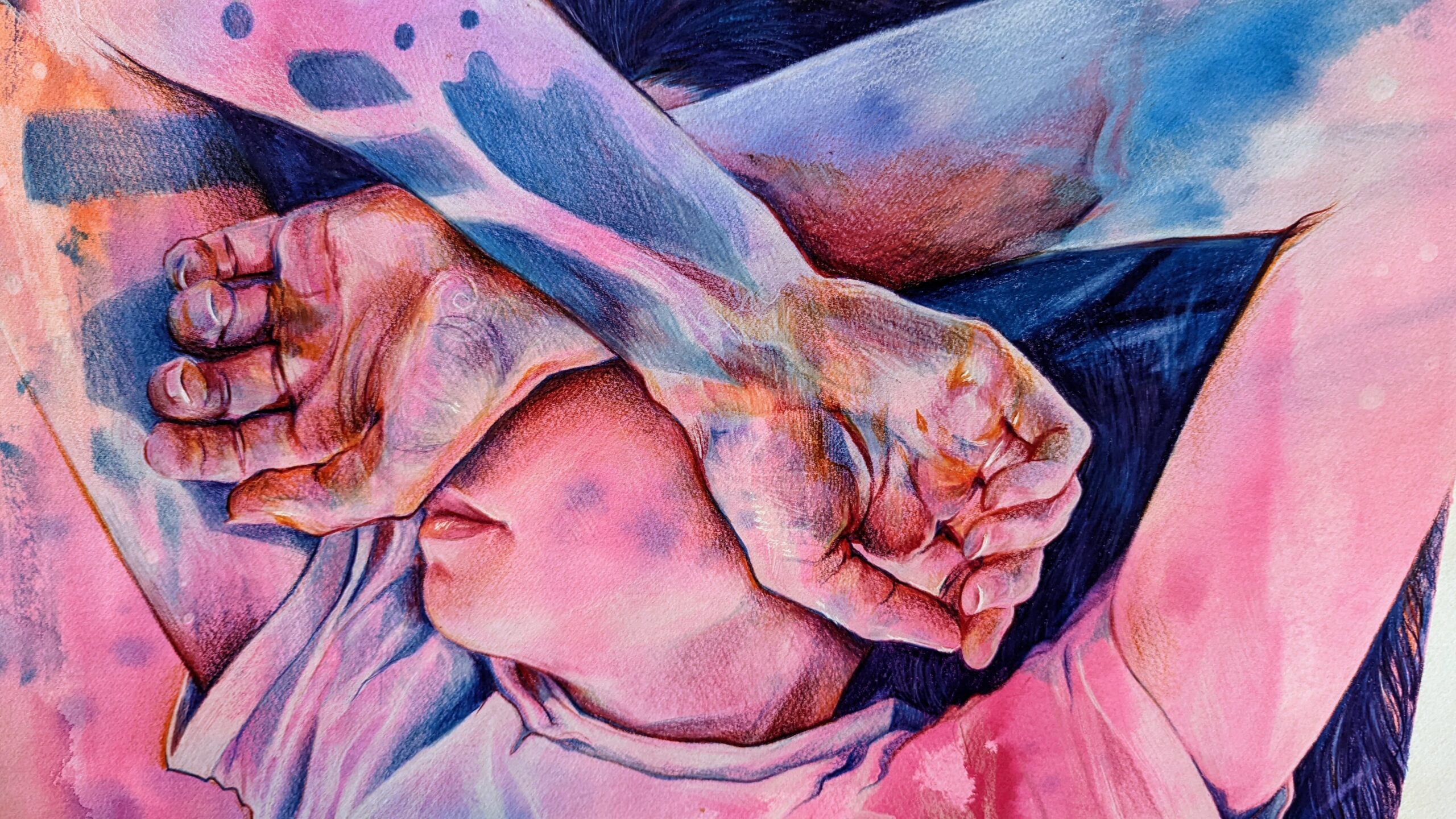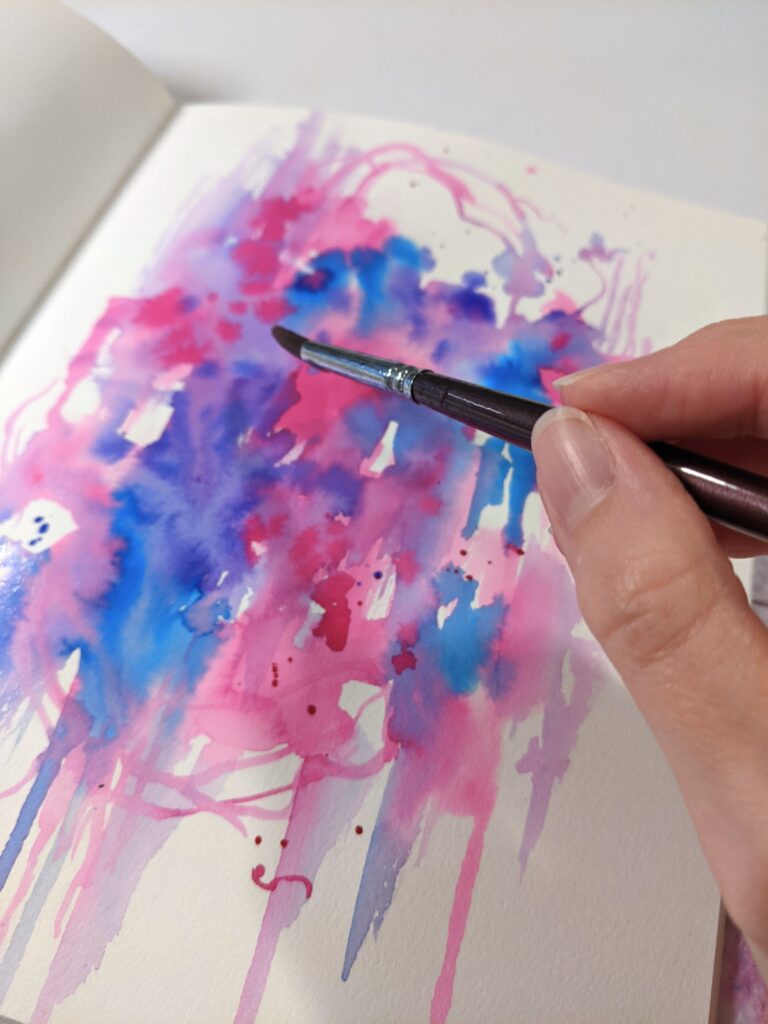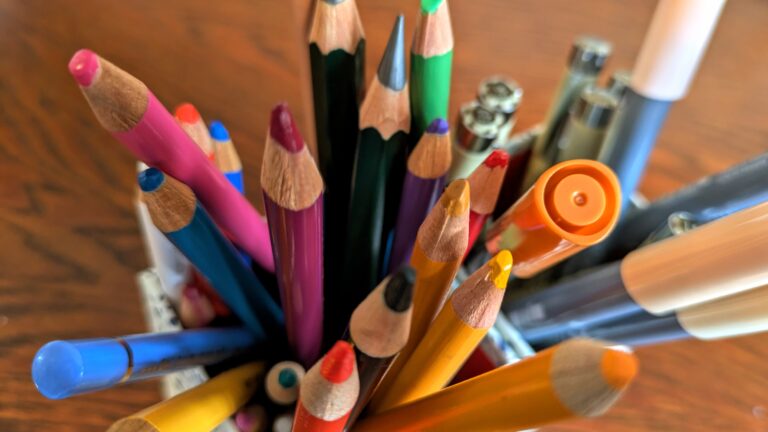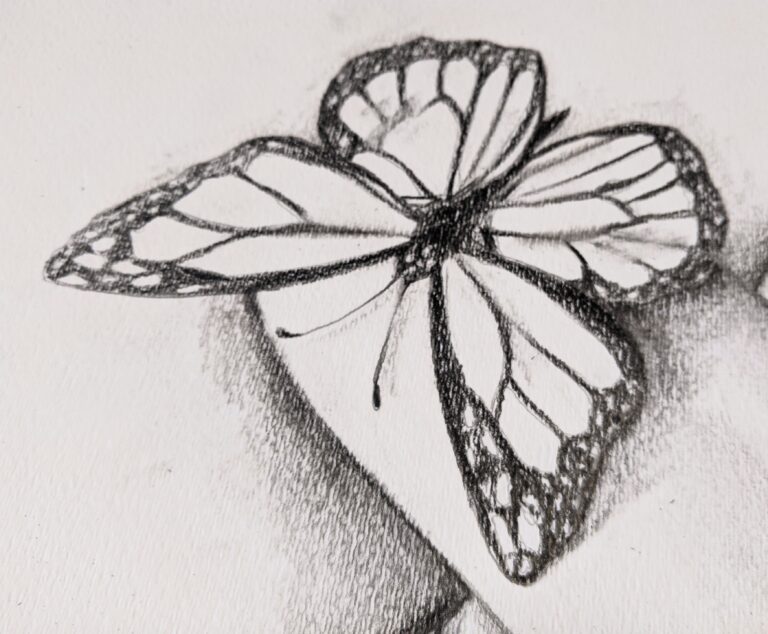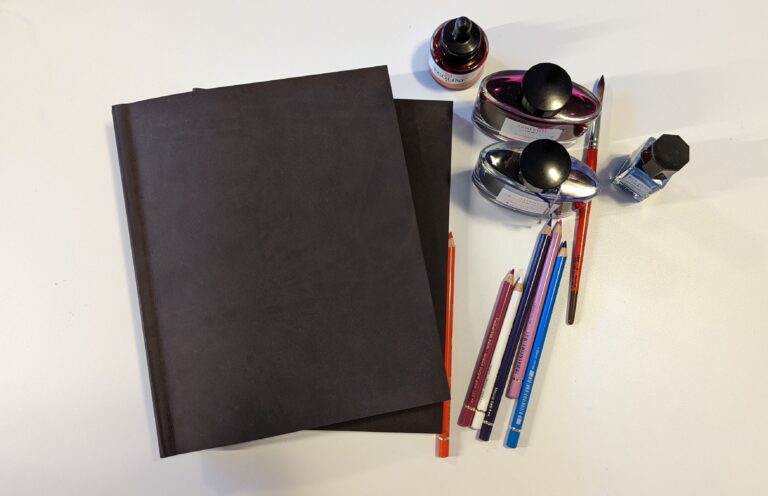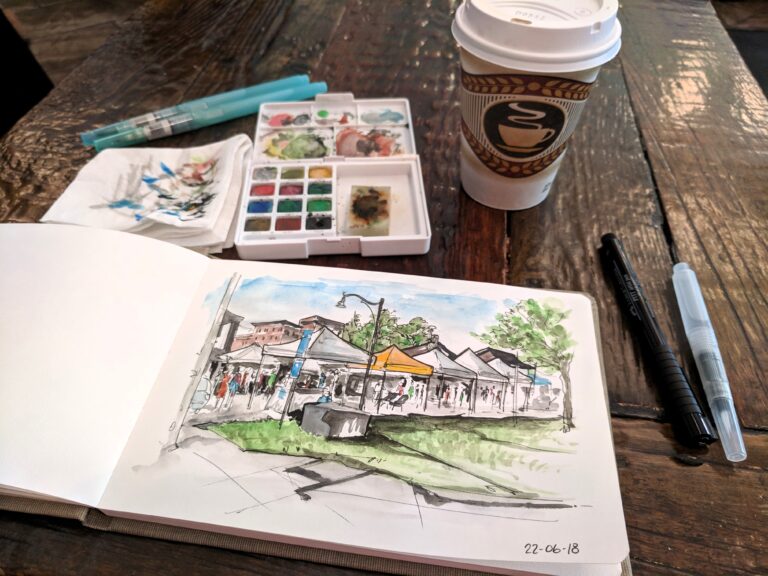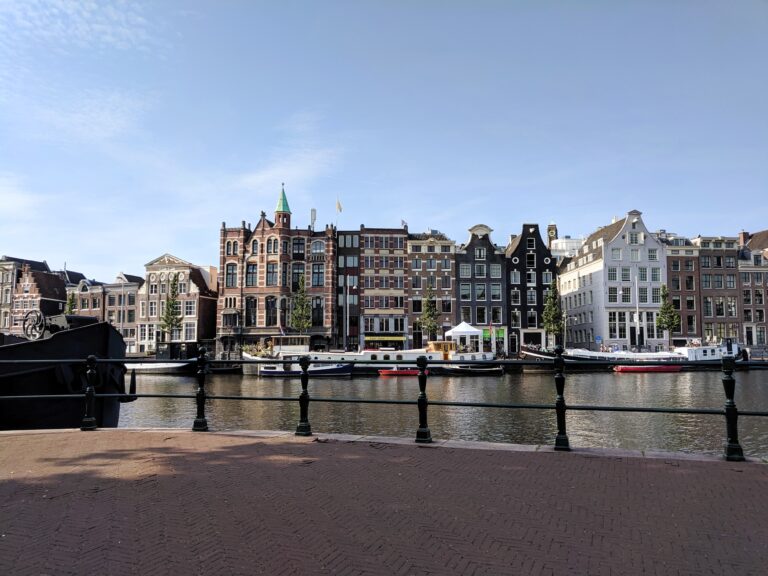Does your art lack meaning or a distinct message?
As artists, we create meaning by arranging key visual elements, like symbols or colours.
Think of it as producing a visual narrative for your audience. You can either take a stance on a topic that you feel strongly about or share something personal, like a dream or a memory.
We also have a tendency to impart meaning to our art unconsciously based on our unique human experience.
So don’t discard what you’ve done so far; you may just need to look at it from a different point of view.
I’ve prepared a series of questions to help you find meaning in your art plus I’ll be answering frequently asked questions about the topic.
“Does my art need to have meaning?”
If you’re wondering if your art even needs to have meaning in the first place, my answer would be no.
You can make art for the sake of art-making. If it brings you joy and a sense of comfort, that’s more than enough.
I know a lot of people who use art as a form of distraction or to unwind after a long day. Some examples of this would be doodling while listening to a podcast or making artwork for decorative/gifting purposes.
Not everything we make needs to have a deeper meaning. And if people start asking questions about your work, tell them that being creative simply makes you happy.
“How can artists convey a message or profound meaning using visual elements?”
Artists can convey a message or meaning with the use of symbols, colour palettes, value, composition and style.
Symbols
We use symbols, oftentimes it’s something that is found in nature like an animal, to represent a concept or a complex idea.
Draw a heart shape to represent love or paint a butterfly to show personal growth.
Artists like Banksy use symbols and striking imagery to show their stance on controversial subjects, like politics or war. One of his most famous pieces is a girl letting go of a red heart-shaped balloon.
Colour palette
Colours or even the lack of colour can create such a strong statement in your art.
Colour is a visual element that can evoke some of the strongest feelings.
Mark Rothko, a colour field painter from the abstract expressionism movement, made large rectangular blocks of colour on canvas. His colour palette and compositions were dramatic, yet simple in appearance.
An easy way to learn how to create colour palettes is by looking at photography. Get inspired by colourful pictures that you’re drawn to.
Value
Value refers to how light or dark a colour is.
If you add white to a colour or hue on the colour wheel, you’ll get what we call a tint. If you add black, then we refer to that as a shade. And if you add grey, it’s a tone.
Learning values as an artist is a crucial skill. By knowing how to utilize values in your art, you’ll learn how to create depth and improve your compositions.
Eventually, you can even use values to create drama in your work by exaggerating this play between light and darkness.
Composition
A composition refers to the way you arrange your visual elements to keep viewers engaged.
Knowing how to create strong compositions takes time. A great way to learn is from basic photography principles such as the rule of thirds and the importance of negative space.
Even abstract art needs composition, by choosing how much or how little you want to use a colour or material.
Style
Your art style or vision is what makes your art unique. How you arrange these visual elements is entirely up to you.
As a beginner, don’t worry! Your art style will develop on its own over time.
If you’re trying to evoke some sort of emotion or reaction from your art, stay true to yourself. Strive to be genuine and think about how you want to connect with people.
9 questions to find meaning in your art
Now that you know how visual elements can convey a profound message, I’ve prepared a series of questions to help you find or add meaning to your work:
- Why do you make art?
- What inspires you?
- Colour palette: Are you drawn to specific colours? How do they make you feel?
- Value: Is your art generally light or dark? Do you create intense shadows or use dramatic lighting?
- Symbols: are there any repeating elements in your work? (Object, person, words, form, colours or animal)
- Does your art evoke some sort of emotion? (Happiness, excitement, sadness, nostalgia, grief, anger and so on)
- Think about your artistic process. Do you have a specific ritual when you create?
- Style: Is your work political? Religious? Cultural? Historical? Ecological? Or inspired by an art movement?
- Composition: is there a specific point of view in your art? (First or third person) Have you exaggerated certain proportions? What about perspective?
Hopefully writing down your answers will offer some clarity.
“How do I write an artist statement?”
During my time in art school, I remember being asked to write artist statements about my work.
Teachers expected us to make artwork with intention and learn how to communicate our ideas effectively with our audience.
Even if you don’t plan on showcasing your art in an exhibition, you can use your artist statement on your website, in your portfolio or to apply for an art residency.
Here are some guidelines for writing your artist statement:
- Write in the first person
- Short and descriptive (~ 200 words)
- Explain your choice of material
- Talk about your artistic process
- Any breakthroughs
- Key visual elements that can help your audience understand what message you’re trying to convey
- Name your artwork so you can refer to it easily
- Who are you as an artist? How does your art relate to you?
- Focus on writing about you as the artist rather than the art itself.
Example of an artist statement segment taken from a series of paintings I made during my time in art school:
“The swirling shapes, which can be described as otherworldly, along with the somewhat uncontrollable qualities of the material, produced unique works of art. When returning to the studios after the winter break, I was inspired to further experiment with pouring medium while reducing the overall amount used on various supports. With these final paintings, my goal was redirected towards layering my work in order to achieve multiple textures and accentuate depth.”
Before you begin writing your own, I recommend you take a look at other artist statements for inspiration.
“Can my art have multiple meanings?”
Yes, and you’ll soon realize that people will always interpret your art in different ways.
You don’t have to reveal everything to your audience either; include a partial explanation and leave some parts open to interpretation.
If you want people to relate to you and your work, don’t force some sort of meaning onto it because you think it might make it more interesting.
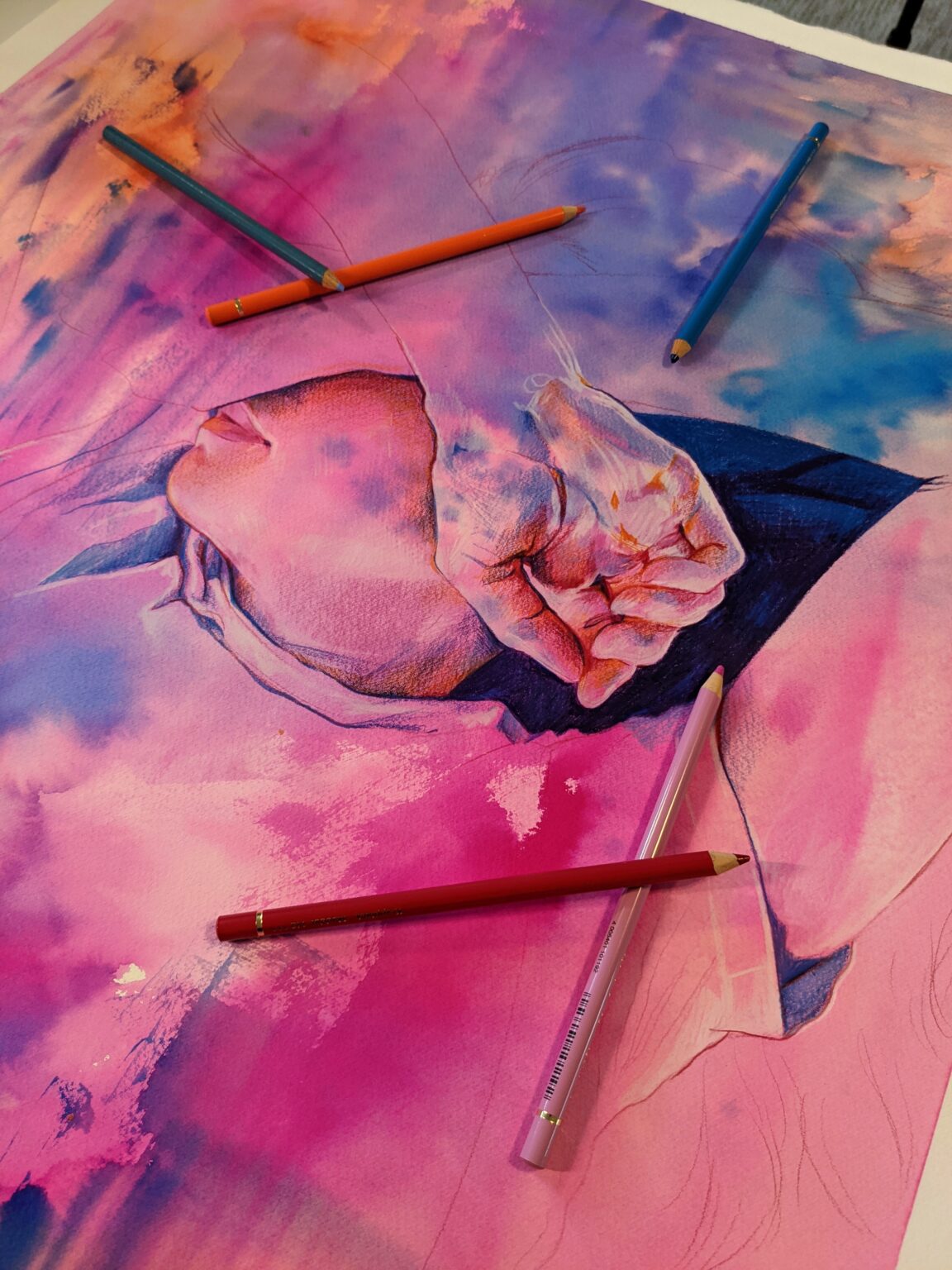
Key Takeaways
Create a visual narrative with your art.
“Does my art need to have meaning?”
- No, You can make art for the sake of art-making. If it brings you joy and a sense of comfort, that’s more than enough.
“How can artists convey a message or profound meaning using visual elements?”
- With the use of symbols, colour palette, value, composition and style.
9 questions to find meaning in your art
- Why do you make art?
- What inspires you?
- Are you drawn to a specific colour palette?
- Is your art generally light or dark?
- Any repeating visual elements in your work?
- Does your art evoke some sort of emotion?
- What is your process?
- Is your work political? Religious? Cultural? Historical? Ecological? Or inspired by an art movement?
- Is there a specific point of view in your art?
“How do I write an artist statement?”
- Focus on writing about you as the artist rather than the art itself.
- Around 200 words.
- Write in the first person.
“Can my art have multiple meanings?”
- Yes, and you’ll soon realize that people will always interpret your art in different ways.

